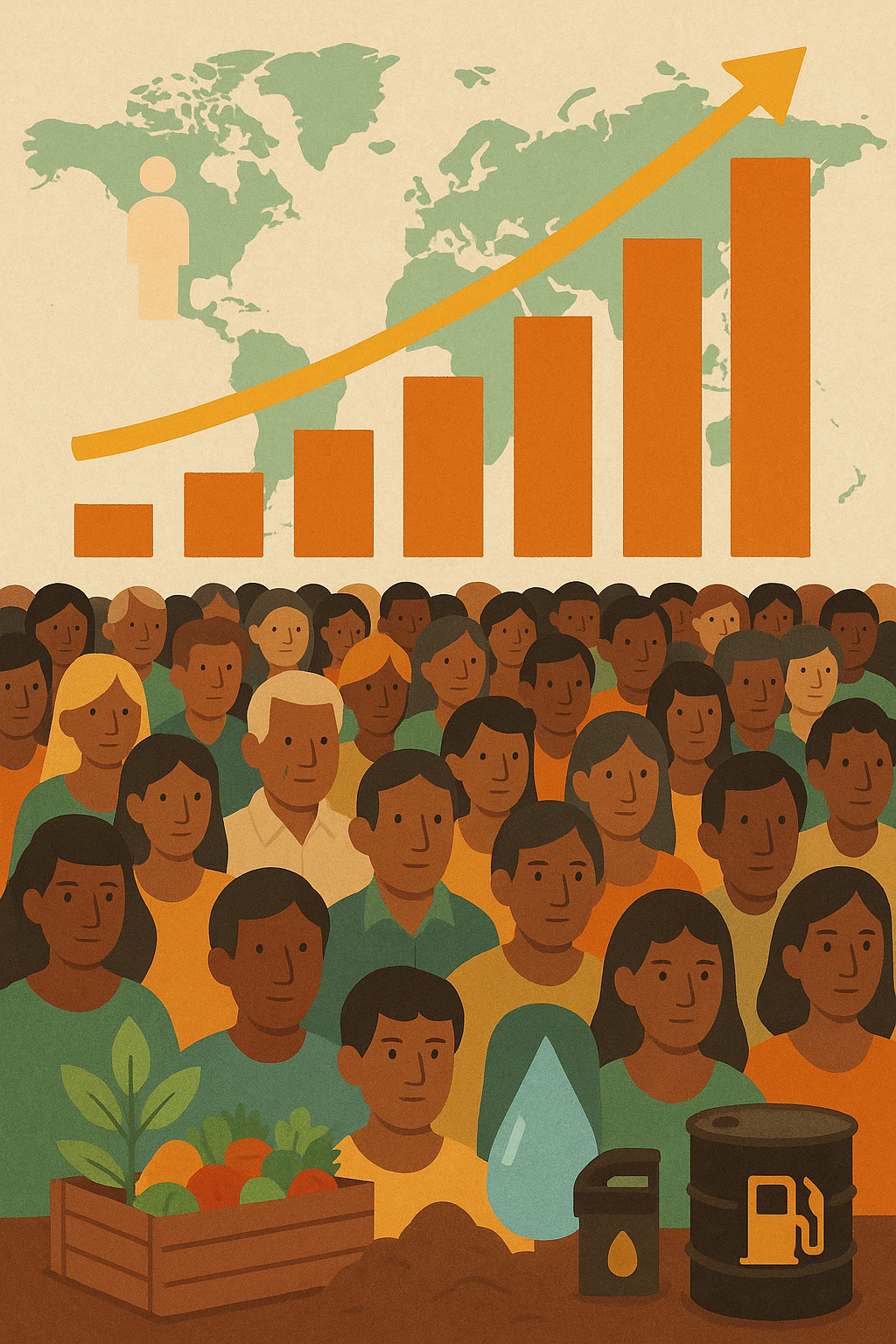Lesson 4: Protecting the Environment (Contemporary Issues)
👨👩👧👦 Population Pressures
📈 Population Growth
After 1945, the world’s population grew very fast. Today, there are over 8 billion people! More people means more food, water, and energy are needed.
📖 Story: In 1950, India had about 350 million people. Now, it has over 1.4 billion — more than four times as many! This puts pressure on farms, cities, and the environment.
🚶♂️ Population Movement
Many people move from villages to cities to find jobs. This is called urbanization. Cities get bigger, but this can cause traffic, air pollution, and crowded housing.
📖 Example: In Lagos, Nigeria, over 20 million people live in the city. Many areas do not have clean water or trash pickup.
🗺 Population Distribution
Some places are crowded, others are almost empty. For example, deserts and mountains have fewer people. Coastal areas and big river valleys often have more.
📖 In Egypt, almost all people live near the Nile River, even though Egypt is mostly desert!
🌎 Environmental Challenges
🔋 Energy Use & Pollution
We use oil, coal, and gas to power homes, cars, and factories. These make pollution that can hurt people’s health and the air we breathe.
📖 Example: In Beijing, China, smog got so bad that schools closed, and people wore masks even before COVID-19!
🌡 Climate Change
Burning fossil fuels releases carbon dioxide (CO₂) into the air. This causes the Earth to get warmer. Ice melts, oceans rise, and weather becomes more extreme.
📖 In Bangladesh, some families have to move their homes every year because of floods and rising seas.
💧 Water Supplies
Water is precious. Some places have plenty of water, others not enough. As the population grows, clean water becomes harder to find.
📖 In Cape Town, South Africa, there was a water crisis in 2018. They almost ran out of water and had a countdown to “Day Zero.”
🌳 Destruction of Forests
Forests give us oxygen and help fight climate change. But many trees are cut down for farming and wood. This is called deforestation.
📖 In the Amazon Rainforest, an area the size of a football field is cut down almost every minute!
🌍 Preserving Our World
🌱 The Environmental Movement
In the 1960s and 70s, people began speaking up for the planet. In 1970, the first Earth Day was celebrated in the United States.
📖 Millions of people joined! Schools held events, and students planted trees. It was the start of a worldwide green movement.
🌎 Environmentalism Today
Now, many groups work to protect the Earth — like Greenpeace, the World Wildlife Fund, and local recycling teams.
📖 In Kenya, a woman named Wangari Maathai helped plant over 50 million trees. She even won a Nobel Peace Prize in 2004 for her work!
🌞 People are using more clean energy: solar, wind, and water power. Many cities are planting more trees and building bike lanes to reduce car use.
🌟 Final Thought
The world is our home. It's up to all of us — no matter where we live — to care for it. Even small actions like using less plastic, planting a tree, or saving water can help.
